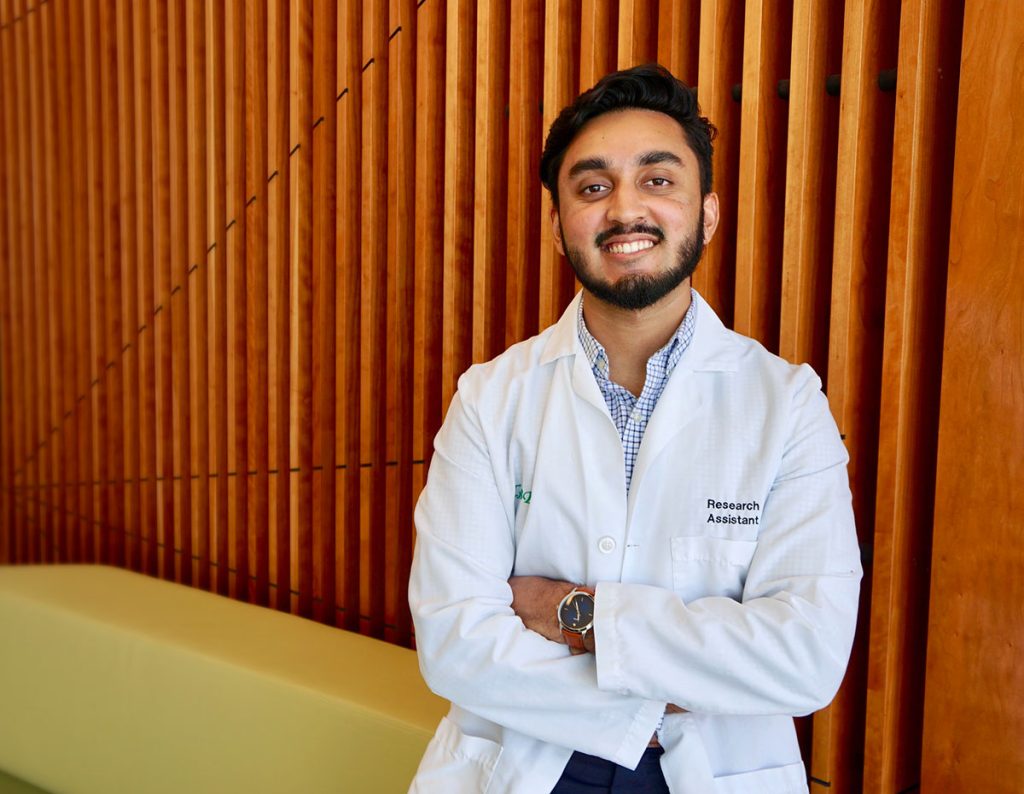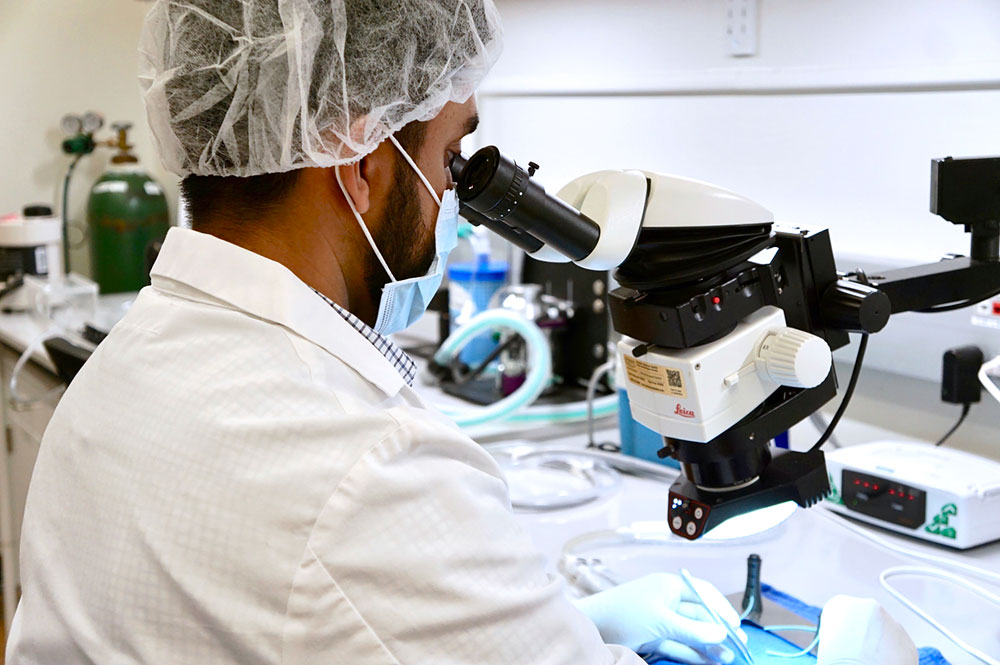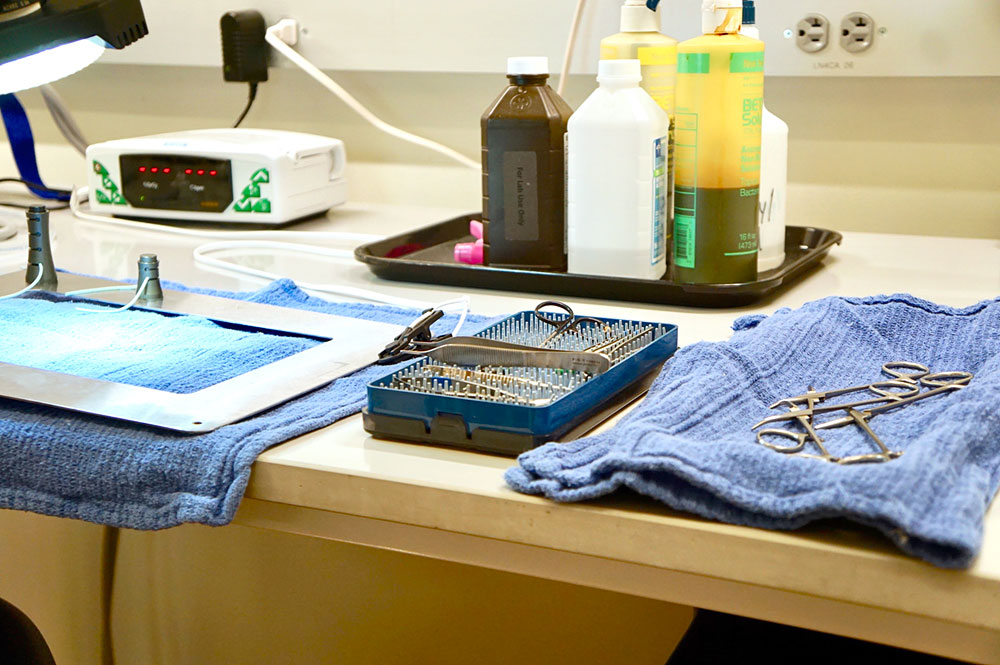TxBDC Undergraduate Research Program Forges Path to Medical School
July 9, 2019
Participating in the TxBDC Undergraduate Research Program provides students with a unique experience that can be extremely valuable for those pursuing medical degrees after they leave UT Dallas. Students have an opportunity to contribute to the collection of pre-clinical and clinical data in the lab by performing a wide variety of research tasks.
As part of the program, students rotate through at least 3 major components of the TxBDC lab to help identify where their individual interests and strengths lie. Opportunities include behavioral training, surgical techniques, development of implantable devices, software development, engineering design and regulatory affairs.
Student researcher Mian Bilal began his career at TxBDC during his freshman year. He spent most of his time gaining experience in animal behavior, data collection, surgical implants, and mapping.

“Not long after joining the lab, Mian quickly proved he was a leader” said graduate student Michael Darrow. “He acquired a plethora of research skills, taught many other students, and played an instrumental role in number of studies that I conducted in the lab. Mian will be greatly missed, but I wish him the best as I know he will go on to do great things in the future.”
Mian will be attending UT Southwestern Medical School in the fall. Here is what Mian had to say about his experience at the Texas Biomedical Device Center.
Q&A with Mian Bilal

How did you hear about our Research Program?
I heard about the program during my freshman year of undergrad because it was marketed in one of the Neuroscience Student Association meetings. I was eager to get started on research so I applied, interviewed, and got in. I’m glad to say it was one of the best decisions I made in college.
Why were you interested in participating in our lab?
I had learned a little about neuroplasticity during my Introduction to Neuroscience and found the concept very interesting, considering it one of the forefronts for treatment of neurological injuries. Having a strong interest in neurology, I thought this that volunteering in this lab would provide me with an all-around rich experience because it incorporates clinical implications into its studies. Additionally, receiving mentoring from several graduate students and professors with different backgrounds was a unique experience that I could not get in other labs.
What types of tasks did you perform in the lab?
I volunteered as a research assistant for three years and during that time, I got to be a part of numerous activities and projects. I started with animal behavior and data collection, but slowly began to transition into constructing medical devices. I maintained quotas for cuff electrodes for one year, and then transitioned into surgery. For the last two years, I was the primary surgeon for a project to develop a new treatment for peripheral neuropathy. I worked with several graduate students. I worked most closely with Michael Darrow on creating the somatosensory cortex mapping apparatus (which was later refined by Dr. Daniel Hulsey) and running TxBDC’s first sensory tactile study. Throughout my tenure, I also had the opportunity to perform histology procedures, teach other students’ micro-construction, write protocols, and conduct sensory and motor behavioral assays such as the von Frey and grip strength assessments. During my senior year, I presented at the annual Society for Neuroscience conference and wrote an honors thesis on one of the projects I worked on.
Which tasks did you enjoy the most when working in our lab?
Definitely surgery. I have a strong interest in neurosurgery and neurological research, so being a surgeon was definitely a rewarding experience. Since I had done micro-construction before starting surgery, I was able to get used to working in small areas quickly, and thoroughly enjoyed working on the peripheral nerves of the forelimbs. Continuous practice helped me develop steady hands, patience during difficult parts of the surgery, and the discipline needed during complications and long procedures. I am confident that nurturing these skills during college will be of great help to me as a medical student and later as a physician.
What will you be doing next?
I will be starting medical school at UT Southwestern Medical Center in Fall 2019 and continuing neurological research at the institute as well.
How did the TxBDC Research Program help you get where you are today?
I believe that the TxBDC Research Program was the strongest aspect of my medical school application. Having been in TxBDC for most of my undergraduate career helped me grow as an individual, refine numerous hard and soft skills that I could show to admissions committees, and develop a strong understanding of scientific research. I believe that conducting research and practicing medicine are interconnected and almost parallel, so understanding the processes of research helped me identify some of the intricacies and challenges of medicine. Although I still have much to learn, I believe my experiences at TxBDC helped me create a solid framework for becoming a medical doctor and researcher.

Do you have any advice for future volunteers?
3 P’s: Be patient, proactive, and productive. One of the challenges of working in such a big lab like TxBDC is that volunteers can often feel that their efforts aren’t making much of a difference, especially during their first few months. The key is to be as productive as you can with your time, asking for additional duties if you find yourself doing nothing during your shifts, reading the previously published papers in TxBDC to actually understand the research being done, and asking questions!!! Once you begin to really understand the experimental designs and concepts of the projects you’re volunteering for, time spent in lab becomes much more fun and rewarding. Additionally, once you show commitment over time and proactively seek out more responsibility, you’ll be given time in departments other than animal behavior, such as micro-construction, mapping, histology, and surgery.
For more information about joining the TxBDC Undergraduate Research Program visit our website at utdallas.edu/txbdc.
